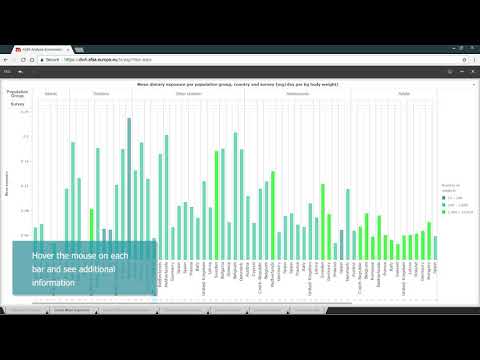Food improvement agents applications: Tools
Food Enzyme Intake Model
The Food Enzyme Intake Model (FEIM) is a tool for estimating chronic dietary exposure For the purposes of risk assessment, measurement of the amount of a substance consumed by a person or animal in their diet that is intentionally added or unintentionally present (e.g. a nutrient, additive or pesticide) to food enzymes used in food manufacturing processes to produce food ingredients or foods as consumed. FEIM follows the methodology recommended in the CEP Panel’s Scientific Guidance for the submission of dossiers on food enzymes with input data curated according to the Guidance on food manufacturing processes and technical data used in the exposure assessment of food enzymes. FEIM is the outcome of a long-standing effort started in 2016 with the launch of numerous calls for data on food enzyme A protein which stimulates or hastens a specific reaction in the body; for example, digestive enzymes help to break down food into nutrients-specific uses for various manufacturing processes. Such data was matched to FoodEx2 categories according to technical factors and assembled into a catalogue. By 2023 the catalogue contained 40 individual food manufacturing processes. By collating that data, 30 spreadsheet calculators were created (FEIM Calculators), combining the collected data with consumption data from the European Food Consumption Database. These calculators provided process-specific exposure Concentration or amount of a particular substance that is taken in by an individual, population or ecosystem in a specific frequency over a certain amount of time results for different population Community of humans, animals or plants from the same species groups (e.g., infants, toddlers, or adults) in different countries of the EU.
The last step was to develop a tool to calculate cumulative exposure from multiple food manufacturing processes. It was finally realised through the easy-to-use FEIM webtool (released in 2024 following its adoption at the first plenary meeting of the FEZ Panel), which uses all the data collated over the years.
How does it work?
The webtool is freely accessible to anyone through the R4EU platform upon registration. The tool allows users to obtain intake The amount of a substance (e.g. nutrient or chemical) that is ingested by a person or animal via the diet estimates for a specific enzyme under its intended uses, by choosing one or more relevant food manufacturing processes and entering the corresponding enzyme use levels, expressed as mg TOS (Total Organic Solids)/kg of raw materials.
The development of this open-source platform is described in a technical report. Its R Shiny code and the user manual are downloadable from the EFSA Knowledge Junction.
Food Additives Intake Model
The Food Additives Intake Model 2.1 (FAIM) is a tool for estimating chronic dietary exposure to food additives. It allows users to estimate the mean and high level exposure to food additives for different population groups in several European countries.
It can be used by applicants, risk assessors and risk managers for estimating exposure to new food additives or to already authorised food additives for which a new use is proposed. Exposure results are provided for different population groups (e.g. infants, toddlers, adults, etc) and for different countries.
FAIM is based on data collected from EU Member States on food consumption (stored in the EFSA Comprehensive European Food Consumption Database).
How does it work?

Enter the occurrence The fact or frequency of something (e.g. a disease or deficiency in a population) happening levels for the food additive A substance deliberately added to foods or beverages for beneficial technological reasons (e.g. to preserve, flavour, colour or ensure a particular texture). Food additives are not normally consumed by themselves nor used as typical ingredients in food under evaluation for the relevant food categories.
You can use:
- “proposed use levels” for new food additives or for a new use of an already authorised food additive;
- “reported use levels” or analytical results in case of an evaluation of an already authorised food additive.
All values have to be entered as mg/kg of food.
To use the tool, you need to register. Send an email to servicedesk@efsa.europa.eu with your name, last name, email address and affiliation.
- More information about FAIM template (PDF) - May 2024
- FAIM terms of use